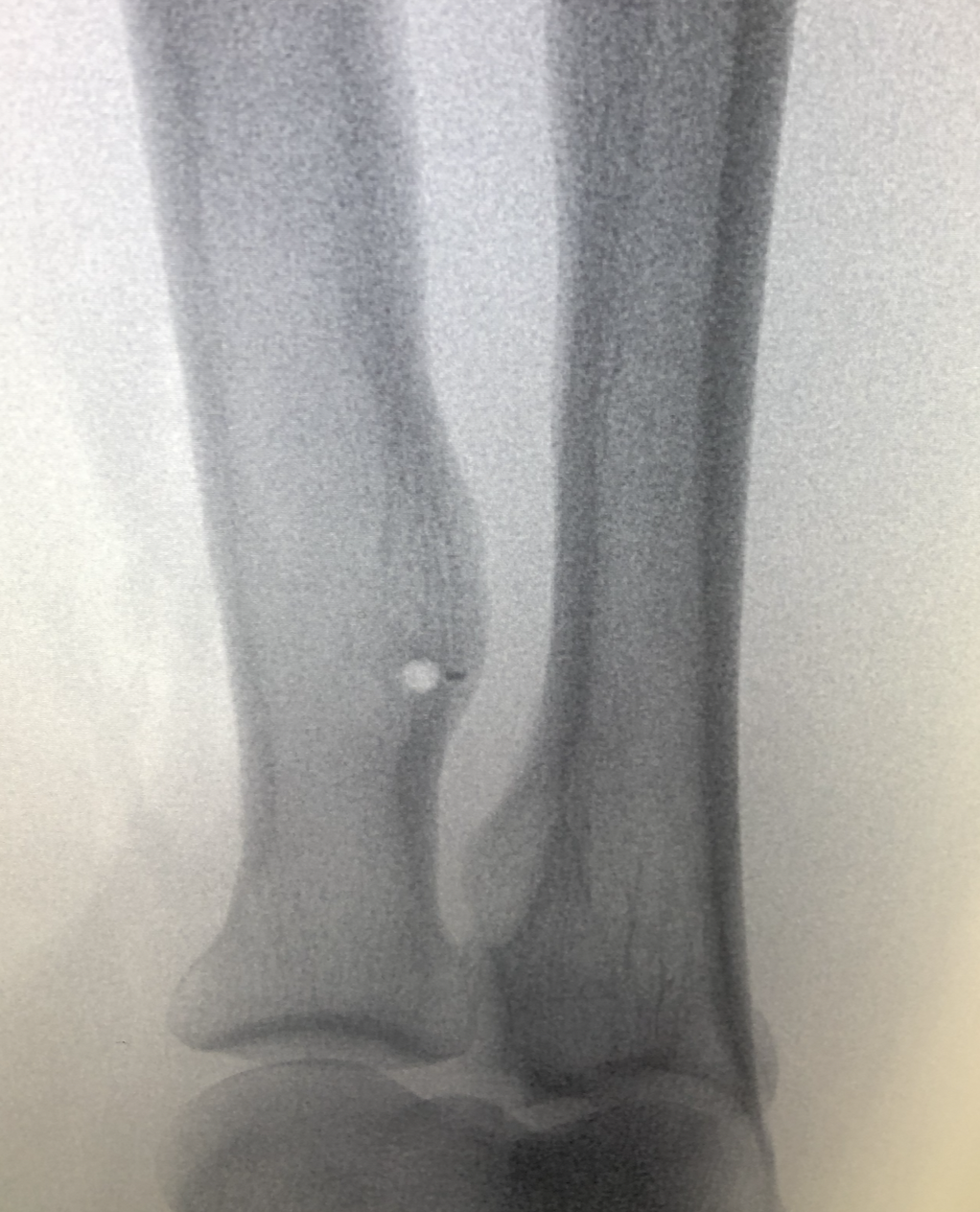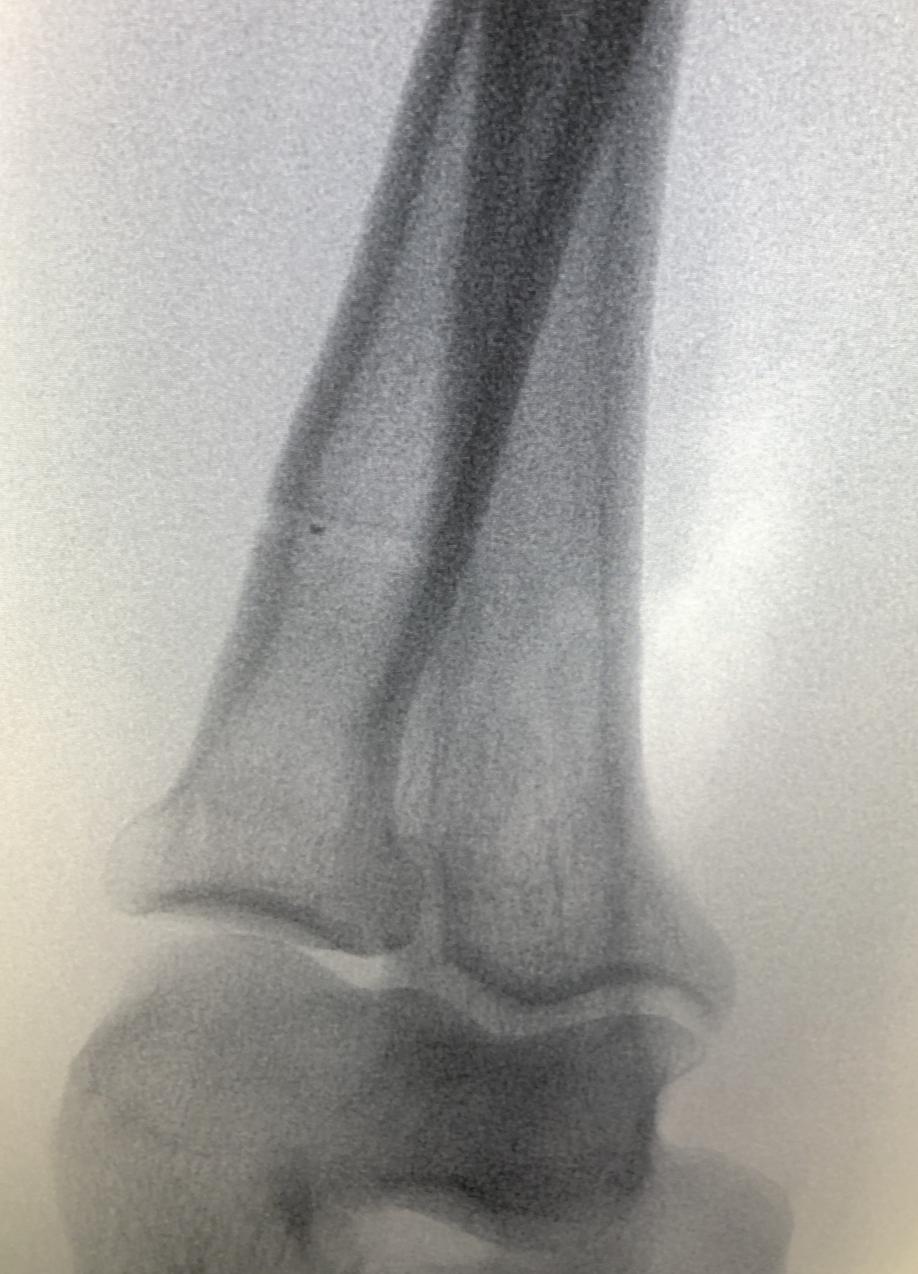Drill tunnel for Distal Biceps Tendon Fixation
There are numerous techniques for fixing a biceps tendon back to the bone in distal biceps ruptures. Some utilize relatively large holes to achieve what is felt to be a more secure fixation. However, the fracture risk must be taken into consideration. Also, the ability to precisely place tunnels is complicated when the fixation methods are large. I use all suture anchors with a small footprint (1.9 mm). This enables me to put two anchors in, one for each bundle of the biceps tendon. Further, if I don't like my drill hole, I can reposition it. There's plenty of real estate in the tuberosity to do this. With a larger drill hole, an eccentric placement can result in a proximal radius fracture, which is a difficult problem to treat.
To get into the weeds further, some fixation methods place a metal button or anchor on the far side of the bone. Occasionally, these can trap the posterior interosseous branch of the radial nerve and create a devastating complication. I prefer an anchor or button deployment that is completely inside of the bone to minimize this risk. Notice on the lateral image of the tuberosity that the drill hole doesn’t violate the far cortex of the bone.
There are many recipes for chocolate cake, and obviously, I am biased that mine is the most delicious. No matter what fixation a surgeon chooses, she must be comfortable handling the nuances of the technique and potential bail out strategies should it not work right the first time.


